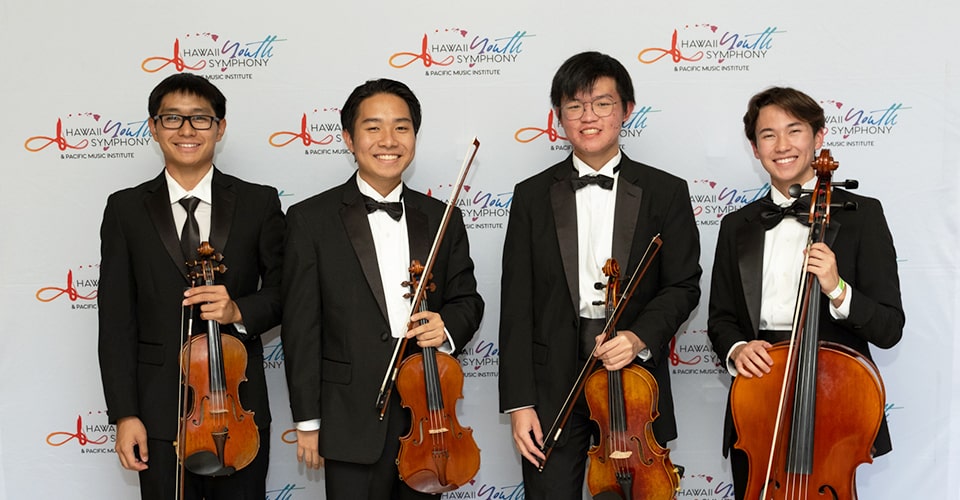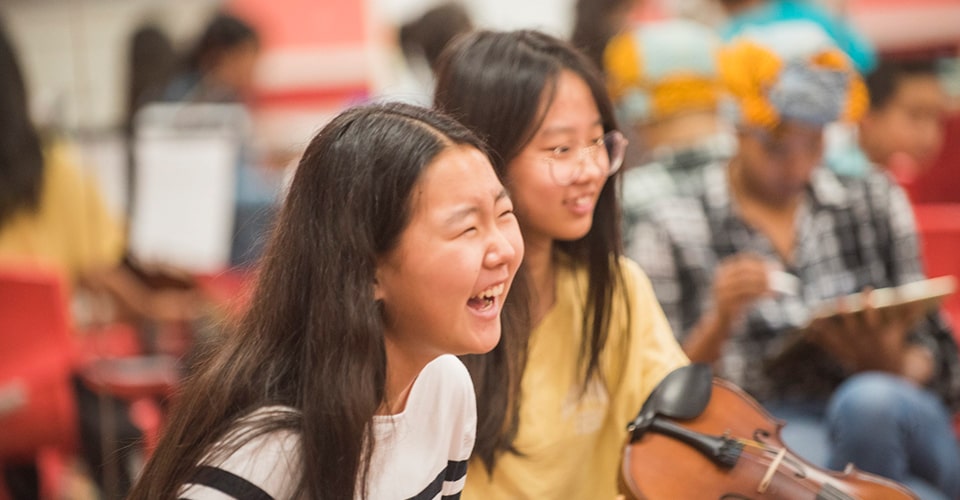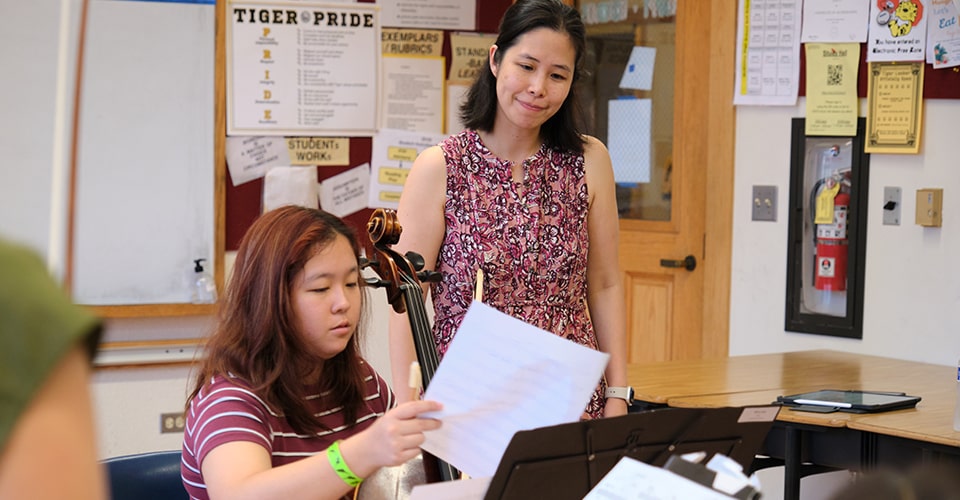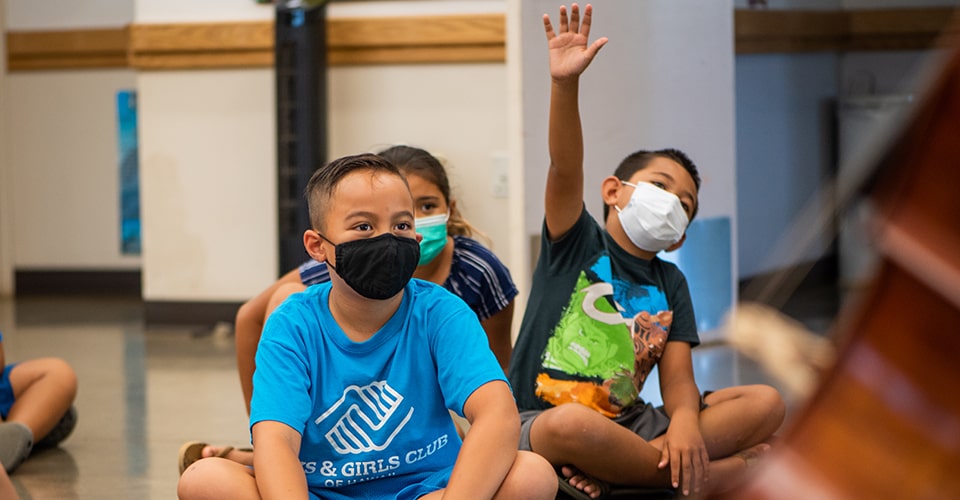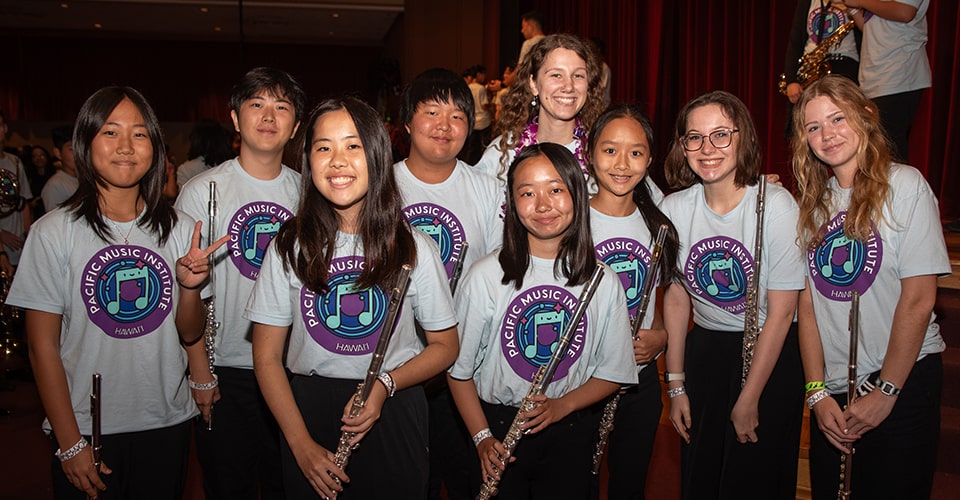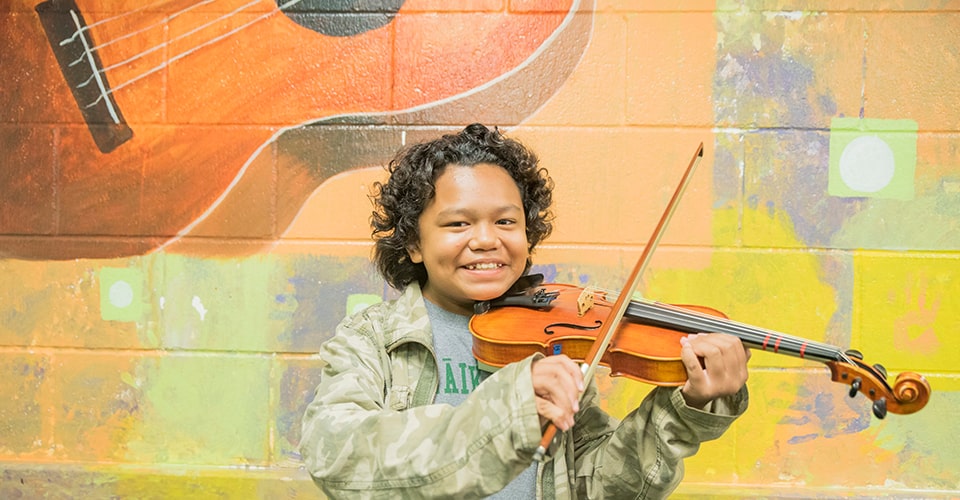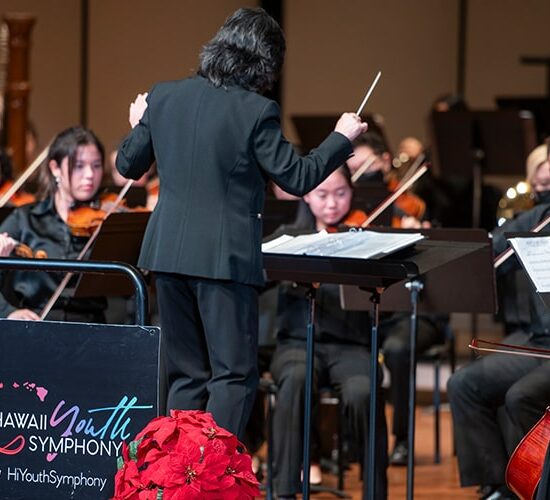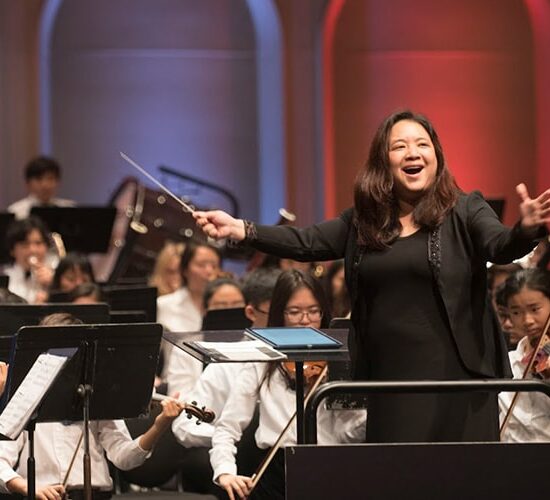Orchestrating Change: Tackling Youth Challenges through Music
At Hawaii Youth Symphony, we believe the presence of music in the lives of keiki leads to outcomes vital to success in school and to joy in life. For us to best understand the impact of what we do, and how we can better contribute to the success of our keiki, it’s important for us to examine the challenges they face and the role we play in overcoming them.
The world is rapidly changing, and today’s youth encounter different obstacles than that of previous generations. Technology has changed the way students learn and has created new social challenges. Kids, teenagers, and young adults have a lot to navigate! Understanding the experiences that are unique to younger generations is key for organizations working to build a brighter future for our keiki. Let’s take a look at the economic and social challenges our youth are facing and identify some opportunities to orchestrate change!
Social Challenges for Gen Z and Gen Alpha Youth
A nationwide survey published in 2024 by Common Sense Media, a research and advocacy nonprofit that focuses on creating an equitable world for kids and families, found that just one-third of respondents ages 12 to 17 said things were going well for children and teenagers today.
Since inspiring young people to find passion, joy, and success in life is a core part of our mission, it is heartbreaking for us to hear so many teens say that they are not optimistic about their futures. With social media platforms becoming a large part of our culture, problems like cyberbullying are exacerbated, and maintaining high self esteem and staying mentally healthy becomes difficult for our teens to manage alone.
As youth mental health has steadily plummeted over the past decade, our children and teens need support beyond what is provided in their schools. A 2022 study found that only about half of U.S. public schools offer mental health assessments, let alone treatment services.
In our rapidly changing digital culture, it can be difficult for parents to support their teenagers as they navigate these new issues.
How Can We Help?
While enrichment activities are not a substitute for treatment, research has shown that extracurricular participation was associated with higher levels of satisfaction with life, and lower levels of anxiety and depressive symptoms in adolescents. This gives us hope that extracurricular nonprofits like us can make a big difference in the lives of the youth that we serve.
By providing kids and teens of all demographics with opportunities to connect with peers face to face, we can combat some of the social issues they are experiencing. They can make friends that share their interests, increase their self confidence by participating in something they are good at, and fill their time without screens.
Economic Challenges for Today’s Youth
Education is meant to provide our young people with the skills they need to become successful contributors to society. As the cost of living increases, from food to housing and beyond, today’s youth feel even more pressure to land a job that meets their needs.
College Costs are Soaring
One expense that hits our youth hard is that of higher education. Between 1980 and 2020, the average price to attend a four-year college full-time increased by 180%. Though college is not a path for everyone, high school students who are interested in pursuing an additional degree must increasingly weigh the pros and cons of taking on so much student debt.

College has also become increasingly competitive, and students from low-income families also have limited access to extracurriculars, summer camps, tutoring, volunteering, and other opportunities that are valued highly by college admissions and scholarship criteria, setting them further behind their peers in the admissions process.
Whether students are interested in pursuing higher education or not, the work that nonprofits are doing to fill our keiki’s after school hours with meaningful educational programming becomes even more crucial as higher education becomes less accessible.
Preparing Graduates for the Workplace
Research around the future of work and education found that “as more automation becomes possible with AI, employers are putting a higher emphasis on skills that only humans can provide, like creativity and perseverance.” In fact, 45% of employers dropped degree requirements in 2023, and 72% said they prioritize skills over diplomas.
While you may read this as good news, our youth are receiving a different message; three quarters of high school graduates say they were moderately, slightly, or not at all prepared to make college or career decisions after graduation.
To better prepare our youth for today’s workforce, we can help them develop interpersonal skills, good work habits, and technical skills that employers value. Where could students learn valuable skills like problem solving, collaboration, creativity, and perseverance? Perhaps more emphasis on the arts! As we know, children who make music embody commitment, discipline, teamwork and persistence- traits known to be valuable to many employers.
Opportunities for Youth Development Outside of School
Especially in underprivileged communities, many of our youth’s talents go unrecognized and underdeveloped. Outside of the classroom, we have tremendous opportunities to enhance our students’ learning through arts, sciences, and hands-on learning. So, what can we do to make learning more fun, and make sure that each child is able to discover their talents?
After School and Weekend
Beyond just finding childcare, there is a vast potential for learning and development in the after school hours. Through various programs tailored to supplement the academic curriculum, after school programs like the Boys & Girls Clubs of Hawaii offer keiki the chance to explore and cultivate their talents, interests, and abilities outside the traditional classroom setting. This supplemental learning experience provides them with a broader perspective, access to positive adult mentors, and a chance to learn “life skills” that are not taught in school. They can try out a variety of hobbies, go on field trips, and explore their passions all while having fun with their peers.
As a music education nonprofit for students ages 8-18, we are grateful to the schools and community organizations who have partnered with us to bring instruments and music teachers to kids after school and on the weekends. We hope these programs will help provide youth of all demographics with opportunities to develop a skill that they can excel at, and a chance to make lifelong friends and memories! Whether it leads to a college acceptance, a career as a professional musician, or any pursuit they choose, we believe that music education can open up new opportunities to them that they may not have otherwise have had.
Summer Break
The long break over the summer is an opportunity for youth to either get ahead or fall behind. Finding childcare over the summer can be quite a challenge for working parents, and many quality educational summer programs can be costly.
To combat the cost of summer programming, Hawaii Youth Symphony offers financial assistance so that local students can participate in our summer music intensive, Pacific Music Institute, and keep up their musical progress.
“PMI made it possible for me to practice playing my instrument more over the summer so I don’t forget anything when I go back to school.” – Pacific Music Institute 2023 student
If our youth can continue learning through hands-on opportunities in the summer months, they will arrive back at school in the fall caught up, engaged, and ready to learn!
Additional Challenges for Hawaiʻi’s Youth
Many of the challenges facing America’s younger generations are compounded in Hawaiʻi, a state that has been facing a housing crisis for generations and whose public education system must work hard to keep up with demand.
Aloha United Way’s ALICE initiative (Asset limited, income restricted, employed) found that nearly half (47%) of all children in Hawaiʻi lived in households that don’t earn enough to afford the basic cost of living for their communities. The crisis we are facing is that having working parents or guardians does not guarantee financial stability. Many parents work several jobs, and are still unable to meet the cost of essentials like housing, child care, food, transportation, health care, and more.
With limited space and a growing population on our islands, housing costs have skyrocketed, and in 2023, Hawaiʻi Governor Josh Green declared the affordable housing crisis a state of emergency. The natural geographic barriers in Hawaiʻi like mountains and oceans also limit many of our youth’s access to extracurricular activities in grade school, and if they plan to attend college outside of the state, Hawaiʻi students and families must also factor in the high cost of airfare.

Luckily, there are many nonprofit organizations in Hawaiʻi that are dedicated to supporting our youth.
Music Education is a Positive Influence
From the educational benefits to mental health, our students have found that music education made a positive impact on their lives. We hope that, as we grow our programming, we can help more and more of Hawaiʻi’s youth reap these benefits.
Recent alumna Celina Lim said that “HYS has not only taught me how to become a better musician, but also other things like responsibility, time commitment, cooperation and communication, which are all skills that I can apply to my future.”
Many of our students also participate in dance, marching band, and other creative outlets. We always love to hear that music brings them joy and helps them get through moments of sadness.
One student said that music education helps them creatively and emotionally, sharing that “Music lifts me up and helps me get through any situation.”
Orchestrating Change!
There are so many things you can do to help Hawaiʻi’s youth thrive! As our partners at the Boys & Girls Club of Hawaii always say, the world is complicated, but helping kids is simple!
Here are some ideas:
- Advocate for better education and childcare options at the school, local, state, or federal level!
- Donate to local nonprofits focused on Children & Youth (including Hawaii Youth Symphony!)
- Enroll your student in extracurriculars like a music education program.

